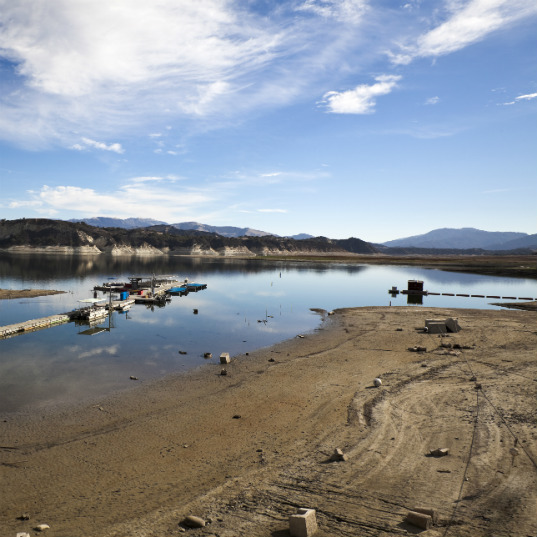Global population hits eight billion – Causes and consequences of overpopulation
The population of the planet has just hit 8 billion, a number that will continue to grow exponentially. What does it mean for the future?
Humanity has just reached the milestone of 8 billion people living on the planet. A figure never seen before, which will continue to grow exponentially – as it has done in the four days since the milestone was reached – and as long as human beings continue to inhabit Earth.
It took 125 years for the population to grow from one billion to two billion. And in 1952, just 70 years ago, there were 2.5 billion inhabitants. Of the 8 billion we have now become, one billion have been added in the past 12 years alone and the next billion should be with us in fewer than 15 years.
Overpopulation has become a tremendous challenge for the world in terms of managing resources, and in the face of inequalities and imbalances, if we are to achieve a sustainable development.
In this article you will find:
- What is overpopulation?
- What is the most populous continent?
- Causes of overpopulation
- Consequences of overpopulation
- Knowledge test
What is overpopulation?
Fewer than 8 billion people populated Earth in the mid-18th Century. Today, just 250 years later, we have already reached 8 billion and will continue to grow until we are forecast to reach 10 billion by 2050.
Asia, the world's most populous continent
Of the total world population, around 61% live in Asia, the most populated continent. Of the 8 billion we have become, India is the country that has most contributed. Data shows that it will overtake China as the most populated country in 2023 and together they will represent 40% of the global population. A further statistic: over half of the increase in Earth’s inhabitants will be concentrated in eight countries by 2050: the Democratic Republic of the Congo, Egypt, Ethiopia, India, Nigeria, Pakistan, the Philippines and Tanzania.
Overpopulated areas face many challenges, most of which stem from the impact of climate change or human overexploitation of natural resources, but a recent study published by Nature Communications points to rising sea levels as one of the greatest dangers. According to this study, coastal areas currently inhabited by 300 million people are set to experience annual flooding by 2050, unless measures are taken to hold back the water — a figure three times higher than previous estimates.
Asia is the area at greatest risk of flooding due to climate change, due to its very low-lying land and overpopulation. Of the 300 million people at risk, 237 million live in six countries: Bangladesh, India, China, Vietnam, Thailand and Indonesia.
Jakarta, capital of the latter, has already, along with its peripheries, reached over 30 million people, and it is estimated that it will be flooded completely by 2050, such that the Indonesian Parliament has approved moving people from the capital to the island of Borneo. But it is the continued extraction of water from the subsoil which will accelerate this flooding.
Causes of overpopulation
It took hundreds of years to reach one billion inhabitants, yet in little over two centuries this figure multiplied sevenfold. Why? There are a series of factors that favored the spectacular growth:
- Falling mortality rate, mainly due to medicine: the Industrial Revolution brought with it a revolution in the world of medicine. Scientific progress allowed us, from then onward, to overcome diseases that previously could only end in death. The invention of vaccines and discovery of antibiotics such as penicillin saved thousands of lives and were a key factor in unfettered population growth. As the number of annual deaths fell, while births remained constant, so the population increased.
- Progress in food production: for its part, scientific research and technological improvements saw more efficient agricultural production, resulting in year-round crops, more resistant seeds, pesticides, and so on…. aspects that Malthus had not taken into account when putting forth his catastrophic theory condemning the human race to disappear. Improvements In fishing and livestock methods also contributed to the provision of more food with which to nourish the population.
- Migration and urban concentration: in certain countries, the impact of migration and accumulation of the population in cities was very important, but not only with respect to demographic growth, but also in relation to wealth generation. Currently, over half the global population live in cities of more than 300,000 inhabitants and which are expected to continuing growing until they reach 70% of the population.
Effects of overpopulation
What does this constant growth mean? There are several direct consequences of overpopulation:

- Exhaustion of natural resources: the main effect of overpopulation is the unequal and unrestrained use of resources. The planet has a limited capacity to generate raw materials and each year the natural resources deficit – the consumption of resources at a faster rate than the planet is able to generate them – is reached earlier. Consequently, in developing countries, overpopulation causes fierce rivalries to control resources. Territorial conflicts over water supply are due in many cases to geopolitical tensions and can end in war.
- Environmental degradation: unbridled use of natural resources, as well as growth in energy production from coal, oil and natural gas (fossil fuels) is having a negative impact on the planet. Consequences number, on the one hand, deforestation and desertification, extinction of animal and plant species and changes in the water cycle and the most direct consequence of all in the form of emissions of large quantities of greenhouse gases leading to global warming.
- Rising unemployment: on the other hand, a high number of workers exist for a limited number of vacancies and this seems destined to lead to high rates of joblessness in the future. This in turn could provoke rising crime and social revolt.
- Rising living costs: all the above will lead, at the end of the day, to increasing living costs in most countries. Fewer resources, less water, the packing of many people into confined spaces and a lack of money are provoking an increase in the cost of living whereby only a percentage of the population will be able to cover all their needs.
- Technological advances: on the positive side, high concentrations of people in urban areas also brings with it research and development in the quest for solutions to the population’s needs. An example is the popularisation of communication technologies and the generation, collection and use of Big Data for sustainable ends, as well as the emergence of Smart Cities adapted to ensure good living conditions for the increasing population.
- The depopulation of rural areas in favour of cities may, paradoxically, create major challenges for such places. It results in a growing number of under-utilised infrastructures, due to migration away from these rural areas, and previously domesticated landscapes whose ecosystems deteriorate without human attention.
As you can see, the impact of overpopulation is tremendous. Overpopulation is one of the biggest challenges humanity is facing and threatens the near future of the planet in economic, environmental and social terms.
Sources: United Nations Population FundWorld Population HistoryOur World in DataInfo Lasopublico.es, Conserve Energy FutureBBCSociology, Discussion, Population MattersFertilabExpansión, Naciones Unidas, El País







